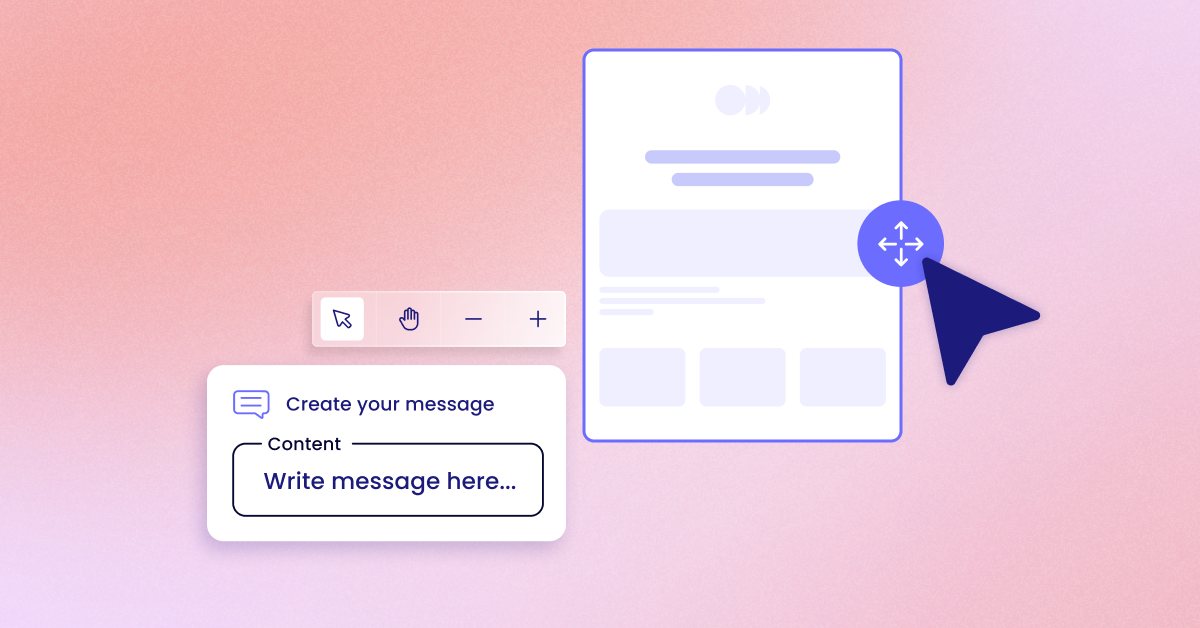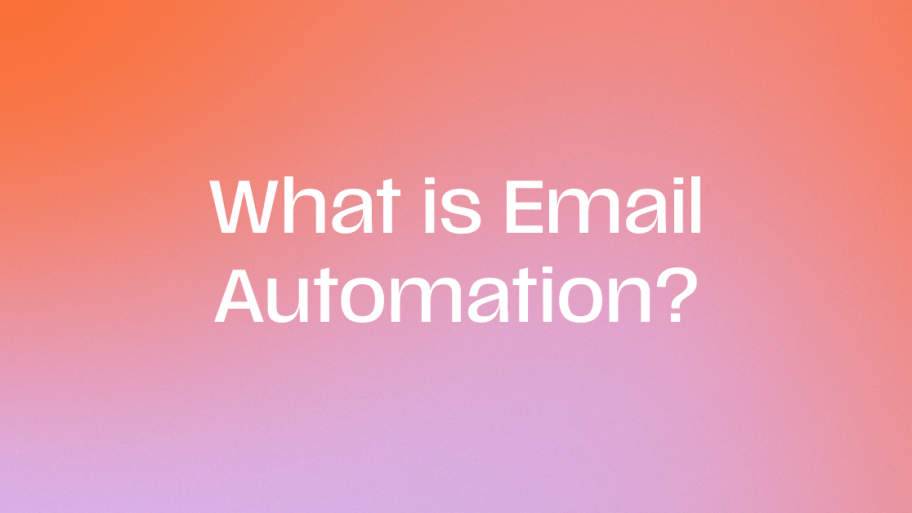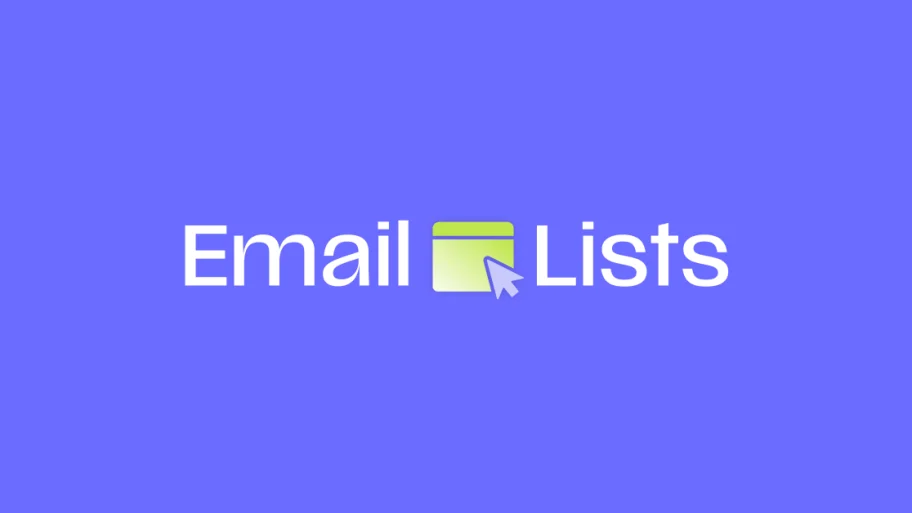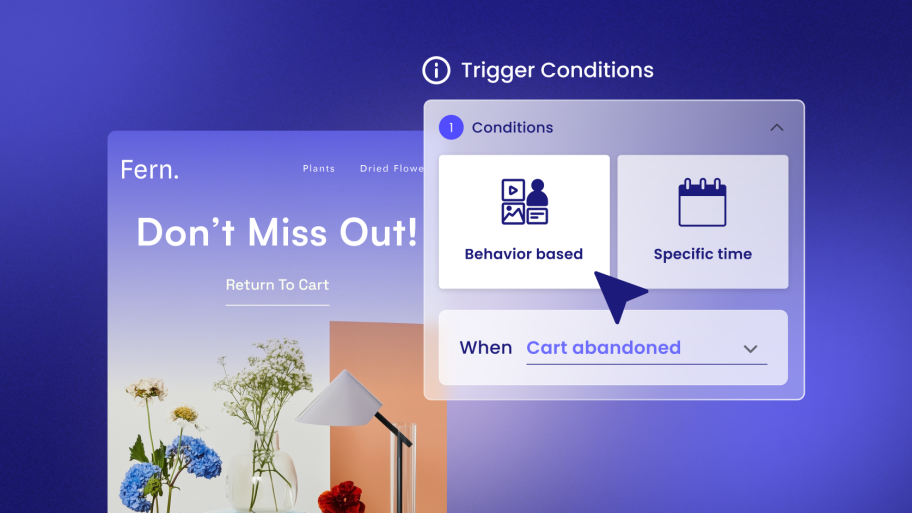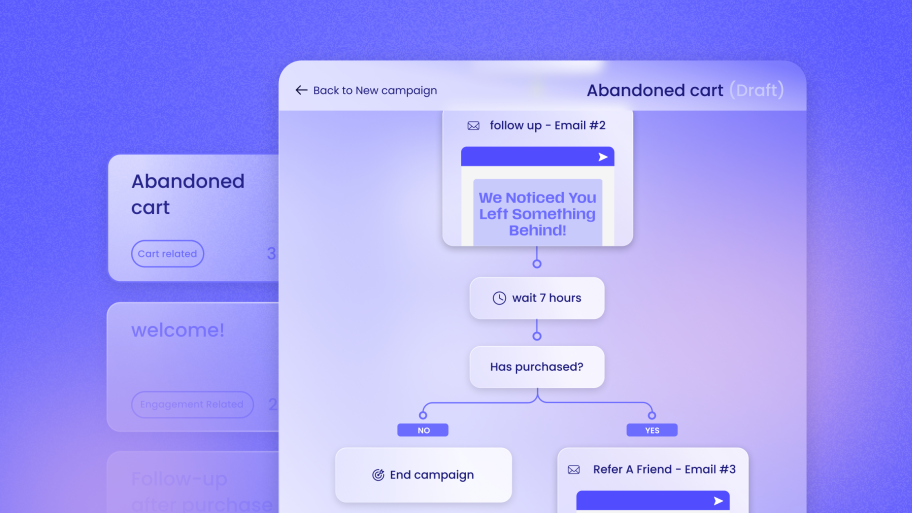What is an Email Marketing Funnel?
Think of an email marketing funnel as a journey you create for your subscribers. It starts the moment someone gives you their email address and continues through a series of automated and manual emails that nurture the relationship, provide value, and encourage purchases.
Unlike a traditional sales funnel that often ends at the first conversion, an e-commerce email funnel is cyclical. Its primary goal is retention. It’s designed to keep customers engaged with your brand, build loyalty, and ultimately, turn them into repeat buyers and even brand advocates.
Why is this so important?
- Cost-Effective: Acquiring a new customer can cost five times more than retaining an existing one.
- Higher Conversion Rates: The probability of selling to an existing customer is 60-70%, while the probability of selling to a new prospect is only 5-20%.
- Increased Customer Lifetime Value (CLV): Repeat customers tend to spend more over time, significantly increasing their value to your business.
For web creators and agencies, offering to build and manage such a funnel is a massive value-add for clients. It moves your service from a one-off website build to an ongoing partnership focused on generating tangible revenue. A tool built for WordPress, like Send by Elementor, simplifies this process by integrating email and SMS marketing directly into the familiar dashboard, making it easier to manage and demonstrate ROI.
The 5 Stages of a High-Converting Email Funnel
A successful email funnel mirrors the customer journey. We can break this journey down into five distinct stages. For each stage, we’ll explore the goal, the strategy, and the specific emails you need to create.
Stage 1: Awareness & Acquisition (Top of the Funnel)
Goal: To attract potential customers and convince them to subscribe to your email list.
This is your first impression. At this stage, people are just becoming aware of your brand. They might have found you through a social media post, a Google search, or a recommendation. Your job is to offer them something valuable enough in exchange for their email address. This is where a lead magnet comes in.
Strategy: Offer Irresistible Value
Your lead magnet must be compelling and directly related to what you sell. It’s not just about getting any email; it’s about getting the right emails from people genuinely interested in your products.
Effective Lead Magnet Ideas for E-commerce:
- Discount or Free Shipping: The most common and often most effective. A simple “Get 15% off your first order” is a powerful motivator.
- Exclusive Content: A style guide, a recipe book, a “how-to” guide related to your products (e.g., “5 Ways to Style Your Scarf” for an apparel store).
- Early Access: Offer subscribers first dibs on new products or upcoming sales.
- Giveaways or Contests: The chance to win a popular product can drive a lot of sign-ups.
- Quizzes: An interactive quiz (e.g., “What’s Your Skincare Type?”) can be highly engaging and provide you with valuable segmentation data from the start.
Implementation: Make it Easy to Sign Up
Once you have your lead magnet, you need to promote it with clear and accessible sign-up forms. Don’t make people hunt for them.
Key placements for your sign-up forms:
- Website Pop-up: A timed or exit-intent pop-up can be very effective. An exit-intent pop-up appears when a user is about to leave your site, giving you one last chance to convert them.
- Header or Footer: A permanent sign-up bar in your site’s header or footer ensures it’s always visible.
- Blog Posts: Embed forms within relevant blog content.
- Checkout Page: Offer a checkbox to subscribe to your newsletter during the checkout process.
Pro Tip: Keep your forms simple. At this stage, all you really need is an email address. Asking for too much information can decrease your conversion rate.
Stage 2: Nurturing & Consideration (Middle of the Funnel)
Goal: To build a relationship, establish trust, and educate subscribers about your brand and products.
Someone has just subscribed. Congratulations! Now what? Don’t just dump them onto your general newsletter list. This is a critical window to make a strong connection. The nurturing stage is where you turn a casual subscriber into an engaged fan who is ready to buy.
Strategy: The Welcome Series
A welcome email series is a sequence of automated emails sent immediately after someone subscribes. It’s your chance to introduce your brand, deliver your lead magnet, and guide them toward their first purchase. This series consistently gets the highest open and click-through rates, so make it count.
The Essential Welcome Series (3-5 Emails):
- Email 1: The Welcome & Delivery (Send Immediately)
- Objective: Deliver the promised lead magnet and thank them for subscribing.
- Content: A warm welcome, the discount code or link to the content, and a brief, exciting introduction to your brand. Keep it focused and deliver on your promise right away.
- Example Subject Line: “Welcome! Your 15% off code is inside.”
- Email 2: The Brand Story (Send 1-2 Days Later)
- Objective: Create a personal connection.
- Content: Share your story. Why did you start this business? What makes you different? Introduce the people behind the brand. Use authentic photos or a short video. This is about building trust and showing the human side of your e-commerce store.
- Example Subject Line: “This is how it all started…”
- Email 3: Showcase Your Best-Sellers (Send 2-3 Days Later)
- Objective: Guide them toward a purchase by showing social proof.
- Content: Highlight your most popular products. Include stunning images, snippets of top customer reviews, and direct links to shop. Frame it as “What other customers are loving” to leverage social proof.
- Example Subject Line: “Check out our customer favorites ⭐”
- Email 4: Address Pain Points or Offer Value (Send 2-3 Days Later)
- Objective: Provide value beyond just selling.
- Content: This depends on your industry. A skincare brand could send “5 Tips for Glowing Skin.” A coffee brand could send a brewing guide. This reinforces your brand as an expert resource and builds more trust.
- Example Subject Line: “Tired of [Common Problem]? Try this.”
- Email 5: The Final Nudge (Send 1-2 Days Later)
- Objective: Create a sense of urgency for the initial offer.
- Content: If your lead magnet was a discount, remind them that it’s expiring. A simple “Last chance to use your 15% off!” can be very effective.
Throughout this series, your goal is to be helpful and engaging. Every email should provide value, whether it’s a discount, a story, or useful information.
Stage 3: Conversion (Bottom of the Funnel)
Goal: To convert the subscriber into a paying customer.
Your subscriber is now warmed up. They know your brand, they’ve seen your products, and hopefully, they trust you. Now it’s time to ask for the sale. The conversion stage focuses on creating triggers that motivate a purchase.
Strategy 1: The Abandoned Cart Sequence
This is arguably the most profitable automation you can set up. Nearly 70% of online shopping carts are abandoned. An abandoned cart sequence allows you to recover a significant portion of that potentially lost revenue.
When a logged-in subscriber or a customer who enters their email at checkout leaves without purchasing, it triggers a series of emails to remind them what they left behind.
The High-Converting Abandoned Cart Series (2-3 Emails):
- Email 1: The Gentle Reminder (Send 1-4 Hours After Abandonment)
- Objective: Remind them about the items.
- Content: Keep it simple and helpful. “Did you forget something?” or “Your cart is waiting.” Show images of the items they left behind with a clear call-to-action (CTA) to “Return to Cart.” Sometimes, people just get distracted.
- Example Subject Line: “Looks like you left something behind…”
- Email 2: Overcome Objections (Send 24 Hours Later)
- Objective: Address potential reasons for abandonment (cost, shipping, uncertainty).
- Content: Reiterate the value. You can include customer reviews for the items, highlight your return policy, or provide links to customer service or an FAQ page. This is a good place to create a sense of urgency by mentioning that items are selling fast.
- Example Subject Line: “Don’t miss out on these top-rated items!”
- Email 3: The Offer (Send 48-72 Hours Later)
- Objective: Provide a final incentive to complete the purchase.
- Content: If they still haven’t purchased, a small incentive can be the final push they need. Offer a small discount (10% off) or free shipping. This should be a last resort, as you don’t want to train customers to abandon carts just to get a discount.
- Example Subject Line: “A special treat to complete your order.”
Using a deeply integrated tool is key here. For a WooCommerce store, a WordPress-native platform can automatically track cart abandonment and trigger these emails without any complex setup, making it a “set-and-forget” revenue driver for your client.
Strategy 2: Promotional Campaigns
Beyond automated sequences, your regular promotional emails are a core part of the conversion stage.
Types of Promotional Emails:
- Sales Announcements: Announce new sales, seasonal promotions, or clearance events.
- New Product Launches: Get your subscribers excited about new arrivals.
- Holiday & Seasonal Campaigns: From Black Friday to Mother’s Day, plan your email calendar around key shopping holidays.
- Segmented Offers: This is where things get powerful. Instead of sending the same email to everyone, segment your list based on past purchase behavior.
- Have a customer who only buys a specific category of products? Send them an email when new items in that category arrive.
- Have a subscriber who has never purchased but has clicked on a certain product? Send them a targeted email about that product.
Segmentation is the key to making your promotions feel personal and relevant, not spammy. It dramatically increases open rates, click-through rates, and conversions.
Stage 4: Loyalty & Retention (The Profitable Loop)
Goal: To turn a one-time buyer into a repeat customer.
The funnel doesn’t end at the first sale. This is where you separate good email marketing from great email marketing. The loyalty and retention stage is an ongoing loop designed to maximize customer lifetime value.
Strategy 1: Post-Purchase Follow-up
What happens right after a customer buys? This is a prime opportunity to build on their excitement and set the stage for the next purchase.
The Post-Purchase Sequence:
- Order Confirmation & Shipping Confirmation: These are transactional but can be optimized. Include links to your social media, refer-a-friend program, or a section with related products.
- “How to Use” Email: A few days after they receive the product, send an email with tips on how to get the most out of it. This adds value and reduces potential returns or buyer’s remorse.
- Request a Review: About 1-2 weeks after they receive the product, ask for a review. Social proof is incredibly powerful, and this is the best time to ask. Make it easy with a direct link to the product page.
Strategy 2: Re-engagement & Win-Back Campaigns
Some customers will inevitably go quiet. A win-back campaign is an automated series of emails sent to customers who haven’t purchased in a while (e.g., 90 days).
The Win-Back Series:
- Email 1: The “We Miss You” Email: A gentle nudge to remind them of your brand. You can showcase what’s new since their last visit.
- Email 2: The Survey: Ask them why they haven’t been back. A simple one-click survey (“Was it our prices? Product selection?”) can provide valuable feedback.
- Email 3: The Aggressive Offer: This is your last-ditch effort. Send an exclusive, high-value discount (e.g., “Here’s 25% off to win you back”).
Strategy 3: Create a VIP Program
Reward your best customers. Create a segment for customers who have spent a certain amount or made a certain number of purchases.
VIP Perks Can Include:
- Exclusive discounts that no one else gets.
- Early access to new products.
- A “points” system for purchases.
- Free gifts.
Making your loyal customers feel special is the surest way to keep them coming back.
Stage 5: Advocacy (The Ultimate Goal)
Goal: To turn your most loyal customers into brand advocates who actively promote your business.
This is the final, and most powerful, stage. When customers love your brand so much that they tell their friends about it, you’ve achieved true loyalty.
Strategy: Referral Programs
Encourage word-of-mouth marketing with a formal referral program.
- Offer a “Give/Get” Incentive: For example, “Give your friends $10 off their first order, and you’ll get $10 off your next order when they buy.”
- Promote it: Include a link to your referral program in your post-purchase emails, newsletters, and on your website.
Advocates drive the highest quality traffic to your site because the recommendation comes from a trusted source.
Measuring and Optimizing Your Funnel
Building your funnel is just the first step. You need to constantly monitor its performance and look for areas to improve.
Key Metrics to Track:
- Sign-up Rate: What percentage of website visitors subscribe to your list?
- Open Rate: How many people are opening your emails? (Pay close attention to your welcome series open rates.)
- Click-Through Rate (CTR): How many people are clicking the links in your emails?
- Conversion Rate: What percentage of email recipients make a purchase?
- Unsubscribe Rate: How many people are opting out? A high rate might indicate you’re sending too many emails or your content isn’t relevant.
- Revenue Per Email: How much revenue is each email generating? This is a critical metric for proving ROI.
Using a platform with real-time analytics built-in is crucial. It allows you to see exactly how your campaigns are performing and which emails are driving the most revenue. This data-driven approach allows you to test different subject lines, offers, and content to continuously optimize your funnel for better results.
Key Takeaways
Building an email marketing funnel is a long-term strategy, but it’s one of the most effective investments you can make in your e-commerce business.
- It’s a Cycle, Not a Line: The goal is retention and repeat purchases, not just the first sale.
- Start with Value: Your relationship with a subscriber begins with a compelling lead magnet.
- Automate to Nurture: A welcome series and an abandoned cart sequence are non-negotiable, powerful automations that build relationships and recover lost sales.
- Segment for Relevance: Personalize your emails by segmenting your audience based on their behavior and purchase history.
- Focus on Loyalty: The real profit is in the follow-up. Use post-purchase emails, win-back campaigns, and VIP programs to keep customers coming back.
- Measure Everything: Use analytics to understand what’s working and continuously optimize your funnel.
For web creators, mastering the email funnel is a game-changer. It allows you to offer a sophisticated, revenue-generating service that deeply integrates with your client’s WordPress and WooCommerce site, creating strong, lasting partnerships.
Frequently Asked Questions (FAQs)
How many emails should I send per week? There’s no magic number. It depends on your industry and audience. A good starting point is 1-2 promotional emails per week, in addition to your automated funnels (welcome, abandoned cart, etc.). The key is to be consistent and monitor your engagement metrics. If your unsubscribe rate spikes, you might be sending too many. If your engagement is high, you might be able to increase the frequency.
What’s the difference between a single opt-in and a double opt-in? Single opt-in adds a user to your email list as soon as they fill out the form. It’s faster and leads to more initial subscribers. Double opt-in requires the user to click a confirmation link in an email that’s sent to them after they sign up. This process verifies the email address and ensures the subscriber really wants to be on your list. Double opt-in leads to a smaller but more engaged list with better deliverability rates. For most e-commerce stores, single opt-in combined with a good welcome series is effective.
How do I write good email subject lines? Your subject line is your first and only chance to get an open. Good subject lines are typically:
- Short and to the point: Many people read emails on mobile devices.
- Personalized: Including the subscriber’s name can boost open rates.
- Curiosity-driven: Ask a question or hint at what’s inside.
- Urgency-focused: Use words like “Last chance,” “24 hours left,” or “expiring soon.”
- Clear and honest: Don’t use clickbait. The subject line should accurately reflect the email’s content.
What is email deliverability and how can I improve it? Deliverability is the ability of your emails to land in the subscriber’s inbox rather than their spam folder. Key factors for improving it include:
- Using a reputable email service provider.
- Maintaining a clean list by regularly removing inactive subscribers.
- Using double opt-in or having a strong welcome series to ensure engagement from the start.
- Avoiding spammy words in your subject lines (like “free,” “buy now,” “$$$”).
- Ensuring your emails are properly authenticated (SPF, DKIM).
Can I build this entire funnel within WordPress? Yes. This is one of the biggest advantages of using a WordPress-native communication toolkit like Send by Elementor. Instead of trying to connect a third-party email platform to your WooCommerce store, a native solution is built to work seamlessly. It can automatically sync your contacts, track customer behavior like abandoned carts, and allow you to manage all your email and SMS campaigns directly from your WordPress dashboard, which dramatically simplifies the process.
